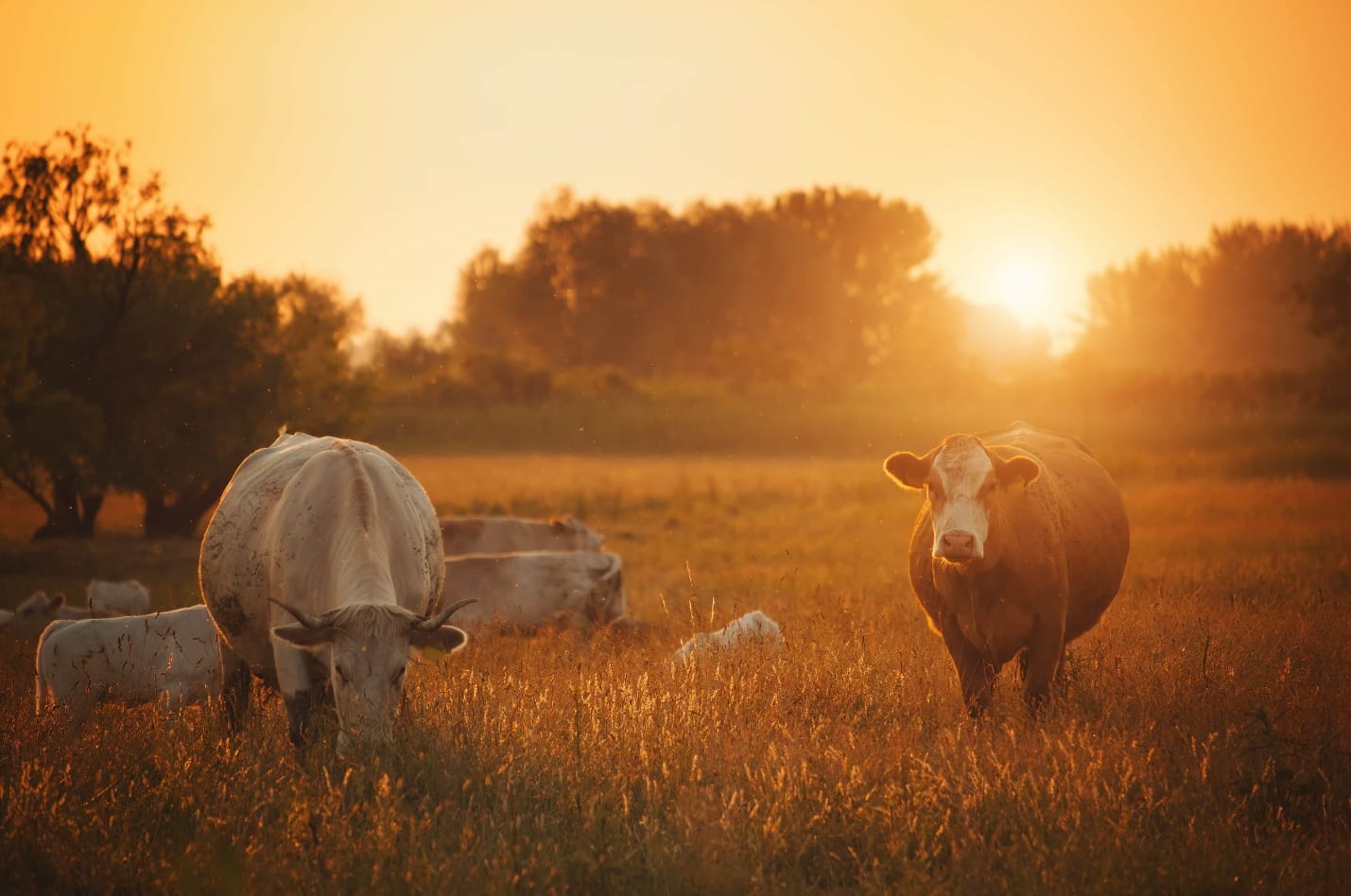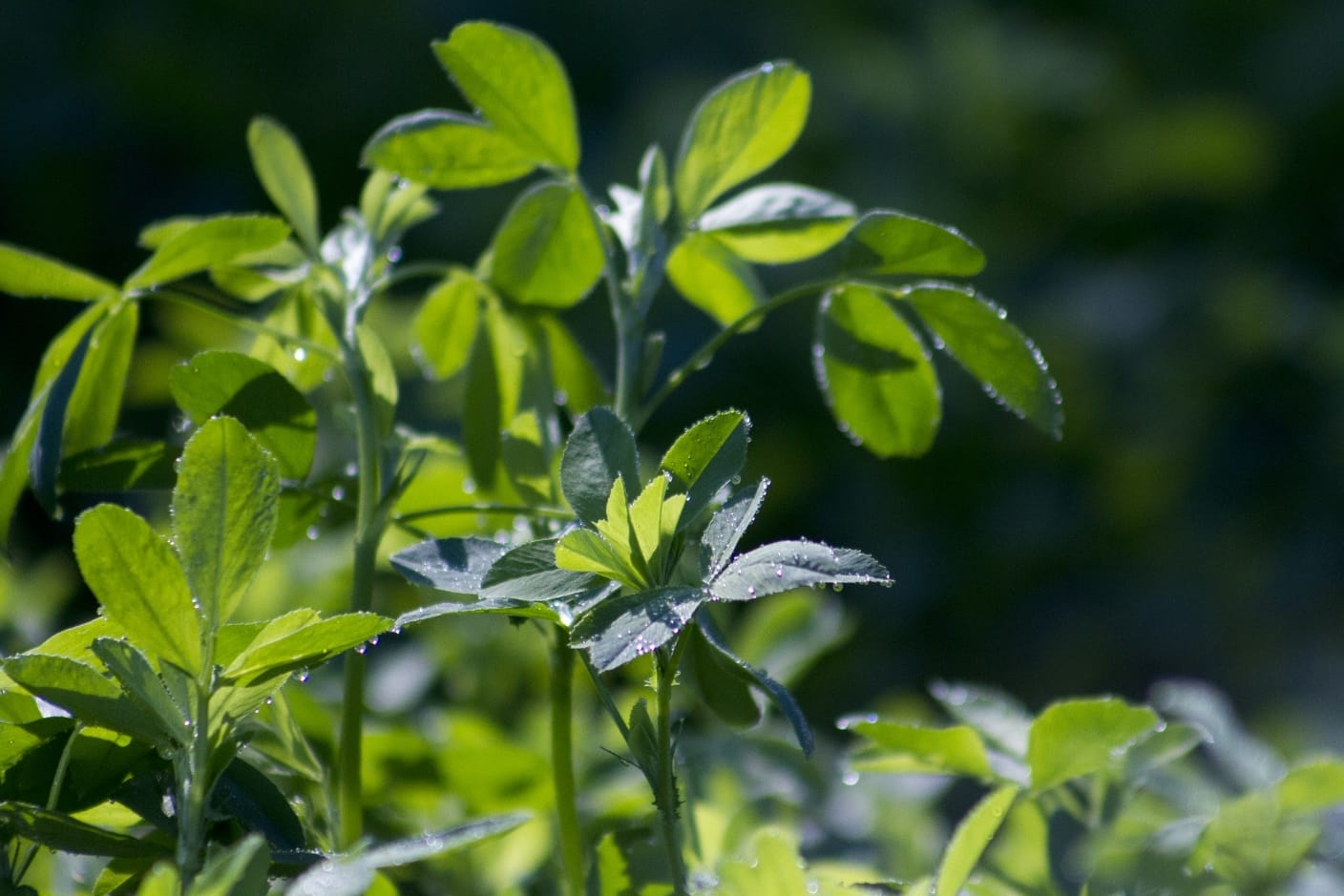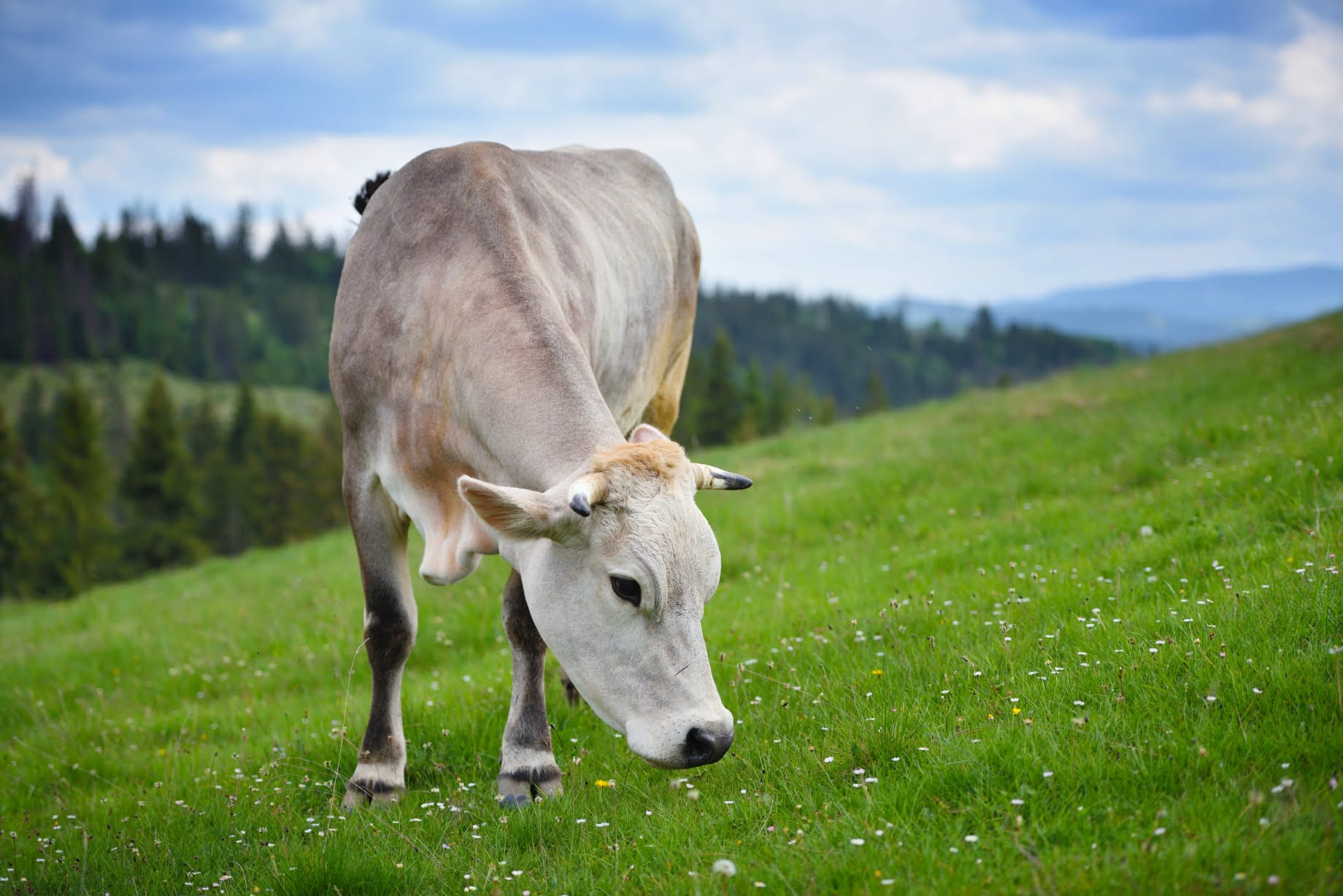Lucerne, also known as the ‘queen of forages’ is one of the most nutritious forages available for cattle. It can either be directly grazed or fed to cattle as hay and silage.
But, it can cause a dreaded condition in cattle known as pasture bloat.
What is pasture bloat?
Lucerne has a lot of highly soluble proteins which creates a stable foam in the digestive tracts of cattle. This foam prevents rumen gases from being expelled from the body by way of belching. This causes a condition called pasture bloat where animals can experience severe symptoms. It could even lead to rapid death.
The clinical signs point to a distended left abdomen which is accompanied by pain, discomfort and bellowing. When we said ‘rapid death’ earlier on, we meant that death could take place even within 15 minutes of the development of bloat.
*cue horror movie soundtrack*
But the good news is that your movie doesn’t have to have a scary ending.

If managed right, grazing of pure Lucerne can even double your farm’s income. There are tons of ways in which your cows can enjoy lush fields of Lucerne and still come out completely satiated and unaffected. In this article, we’ll tell you how.
How does Lucerne cause bloat?
The initial rate of ruminal digestion in Lucerne is 5 to 10 times more than that of other grasses that your cows would chomp on.
Lucerne in your cows’ tummies get digested quickly and so, the animals can munch on much more quantities, much easier, without getting full.
It is this feature of rapid digestibility that helps in high cattle production rates but it is also this same feature that could cause a farmer to lose a few animals to bloat (if he doesn’t manage his pastures well.)
Timing is everything!
The risk of pasture bloat is at its peak when the Lucerne is vegetative till the early bloom stages of growth.
As Lucerne slowly glides into the full bloom or post-bloom stages, the soluble protein levels decrease, the plant cell walls get thick, lignin content increases and the rate of digestion of Lucerne in the rumen lowers.
A lot of farmers, maybe you included, usually don’t allow their cattle to graze Lucerne until it is in full bloom, and that’s a good practice to follow!
Another thing to remember is that soluble protein levels could be higher in the plant during the early part of the day. So, if you put your cattle onto Lucerne pastures after the morning dew is off, the risk of bloat would be lesser.

The wilting of Lucerne also lowers the levels of soluble protein. This, in turn, reduces bloat risk.
Post a period of frost, freezing ruptures the plant cell walls and increases the release of soluble protein in the plant. There are lots of rumours going around that Lucerne is safe to consume in large quantities after frost but that’s not true. Yes, the risk of bloat from frozen Lucerne does decrease with time but long-term frozen Lucerne should also be viewed as bloat reduced and not as bloat safe.
Speaking of frost, when you’re transitioning your animals from preserved feed during winter to when the grazing season starts again, you need to be exceptionally careful. After being cooped up in the barns with cattle feed during the heavy part of winter, when your cows are set on lush, warm pastures, they’re going to be acting like it’s the last day of the Atkins diet and are going to want to get as much of those leafy Lucernes into their stomachs!
So what you can do is ease them into that Lucerne goodness nice and slow, by feeding them dry fibre in the barn for about half an hour before letting them loose on to the pasture. You could put molasses or any other delicious-tasting feed into the forage otherwise they will end up pigging out on the pasture.

Now that we’ve spoken about times in the day and weather conditions, we’re going to give you some general rules you should follow to ensure that your cattle will never contract bloat while feasting on Lucerne!
For the animals:
- Do not put cows that are extra hungry or ravenous on to pasture that contains a high proportion of Lucerne.
- Fill up your animals with dry hay or grass before grazing pastures that have the potential to cause bloat.
- If your pasture already has a high bloat-causing potential and to top it off, it’s moist with dew or rain or irrigation water – do not put your animals to graze. The rate of intake is much faster when the plants are moist, and so is the rate of digestion. As we explained earlier, the more matter that is digested will cause foam that traps gases inside causing pasture bloat.
- If you're making cattle feed ration, always do it in the middle of the day or later so that forage is drier and the concentration of plant carbohydrates are much higher.
- Make sure there are no drastic changes in forage quality when rotating from one paddock to the other by leaving enough residue.
- Keep a close watch on your livestock and remove any animals that are bloated from the stock.
- Do not let your cows graze legumes even before they start blooming.
- Manage your grazing well and ensure that your animals consume low or non-bloating plants and plant parts like a good Lucerne and forage blend.
- Follow daily strip grazing or multiple paddock systems rather than continuous stocking.
- Once the grazing begins, do not remove your animals from pasture. Also, do not keep making changes in pasture unless the animals have distended rumens. We say this because even changes in diet frequently could prevent the microbes and the animals from adapting to bloat pastures.
- If you find that your animals are experiencing mild bloat, just keep walking them until the gas releases. If you remove your animals from the pasture and then reintroduce them again later, it will only increase the risk of bloat.
- Observe your pastures with a magnifying glass! If you suddenly find that your Lucerne pastures show a rapid flush of growth at a certain time when it’s cloudy or wet or maybe even after a hail or drought, inspect your animals for bloat.
- If Lucerne has frozen in the snow, delay your grazing for about 3-5 days.
- Talk to your animal nutritionist or vet about using bloat-prevention supplements.
For Lucerne pastures:
- Do not move your cattle in the morning. 2 pm – 5 pm is a good time instead.
- Move your cattle two days after rain when it’s hot and not during the rain since Lucerne tends to grow very well in the rain.
- When Lucerne blooms to 15% - 20%, the risk of bloat reduces.
- Even if you waste 50% Lucerne, it is still better than grass since it fixes nitrogen and anyway will eventually out-produce grass!
- Don’t graze each paddock completely down to nothing before moving to the next. Maintain minimum post-grazing residue levels.
- Monitor your animals and check to see if they’re mixing the Lucerne with grass.
So there you have it! Lucerne isn’t called the queen of forages for nothing. All it needs is some proper grazing management and management of your animals as well, to get all the nutritious and tasty goodness out of Lucerne with none of that messy bloat business!
Until we meet again, happy farming!
- The Dedicated Team of Pasture.io, 2021-01-04